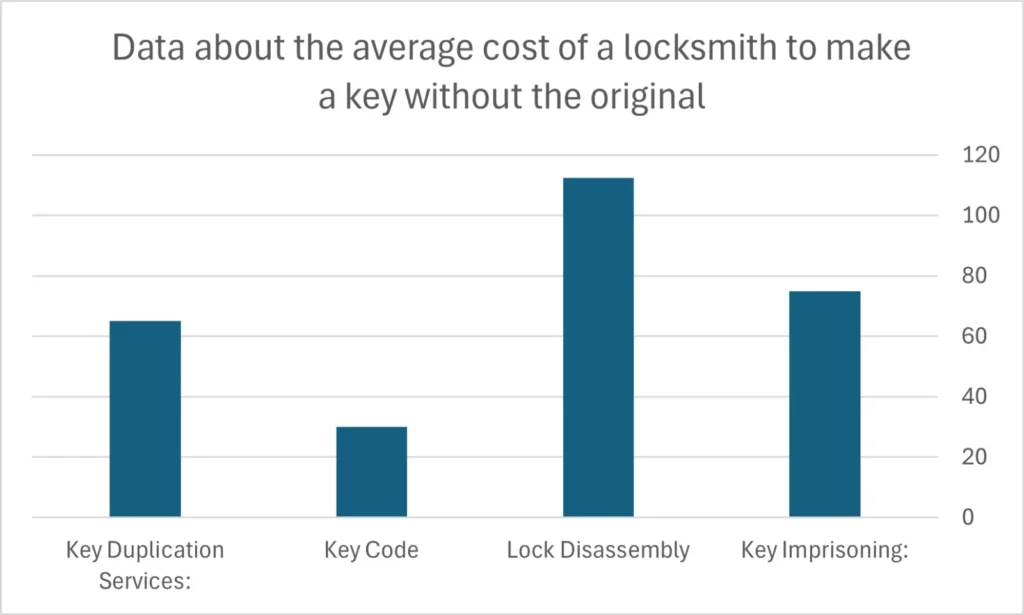Yes, a locksmith can often make a key without the original, though the process can be more complex than duplicating a key from an original. Understanding the role and significance of an original key helps to appreciate the locksmith techniques.
Importance of an Original Key:
An original key is the first key made for a specific lock. The original keys must match the unique internal configuration of that lock, ensuring it operates smoothly. The original key is important because it is:
Precise Fit
It should be cut to fit the exact arrangement of pins or tumblers inside the lock. This precise alignment allows the key to turn the lock mechanism effectively, enabling it to lock or unlock the door as intended.
Key Code:
For high-security locks, the original key might incorporate special, unique cuts, advanced patterns, or electronic components designed to enhance security and resist unauthorized access.
Enhanced Security Features
Often, original keys come with a key code—a series of numbers or letters in the key-cutting pattern. This code is necessary for making duplicates or replacements, providing a specific blueprint for the key cuts.
Methods for Creating a Key Without the Original
If the original key is lost, locksmiths have several methods to create a new key, although having the original or the key code simplifies the process:
Key Code Utilization
If you have the key code, (which might be on a tag or in the recordings of the manufacturer), a locksmith can use this code to cut a new key that matches the original’s pattern exactly. This method is precise and straightforward if the code is available.
Lock Disassembly
If the key code is not in your reach, and the original key is lost, a locksmith can disassemble the lock to examine its internal components. By inspecting the lock’s internal structure, the locksmith can create a new key that fits the lock’s unique configuration.
Key Imprisoning
If you have a similar lock or a different key that fits the same lock type, the locksmith might use it as a reference to create a new key. This method depends on the similarity between the locks and keys.
This technique involves inserting a blank key into the lock and making impressions of the internal pins or tumblers. The locksmith then files the blank key to match these impressions, effectively creating a key that works with the lock. This method requires skill and patience but can be effective when other options are unavailable.
Key Duplication from a Similar Lock
Challenges and Expertise
Lock Complexity: High-security or specialized locks may present additional challenges due to their intricate design or security features.
Locksmith Skills, expertise, and tools play a significant role in determining the effectiveness of these techniques.
The success of these methods can vary based on several factors:
In summary, while an original key simplifies creating a new key, locksmiths have various methods to generate a working key without it. The complexity of the lock and the locksmith’s skill can impact the success of these methods, especially for high-security or specialized locks.
